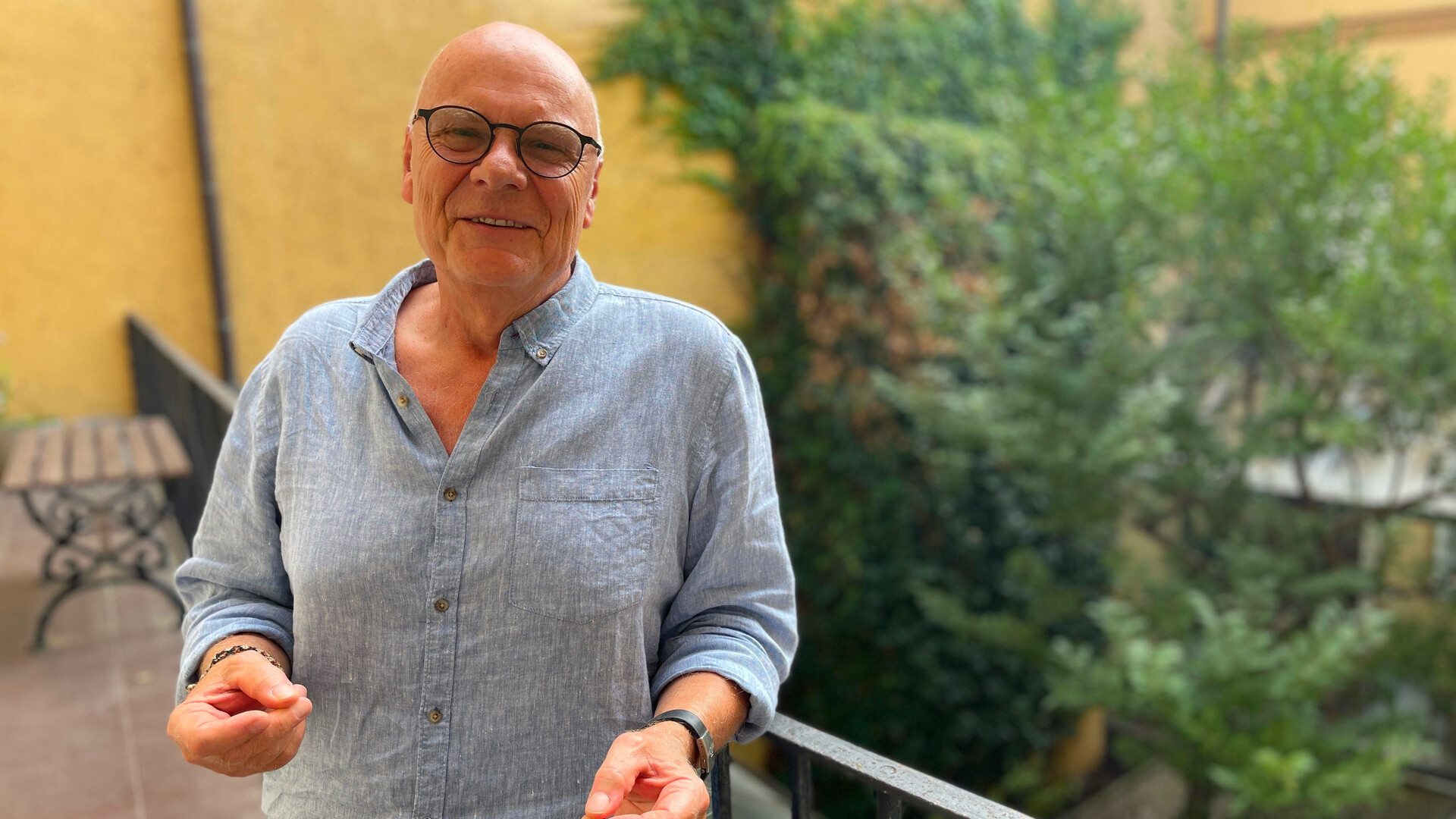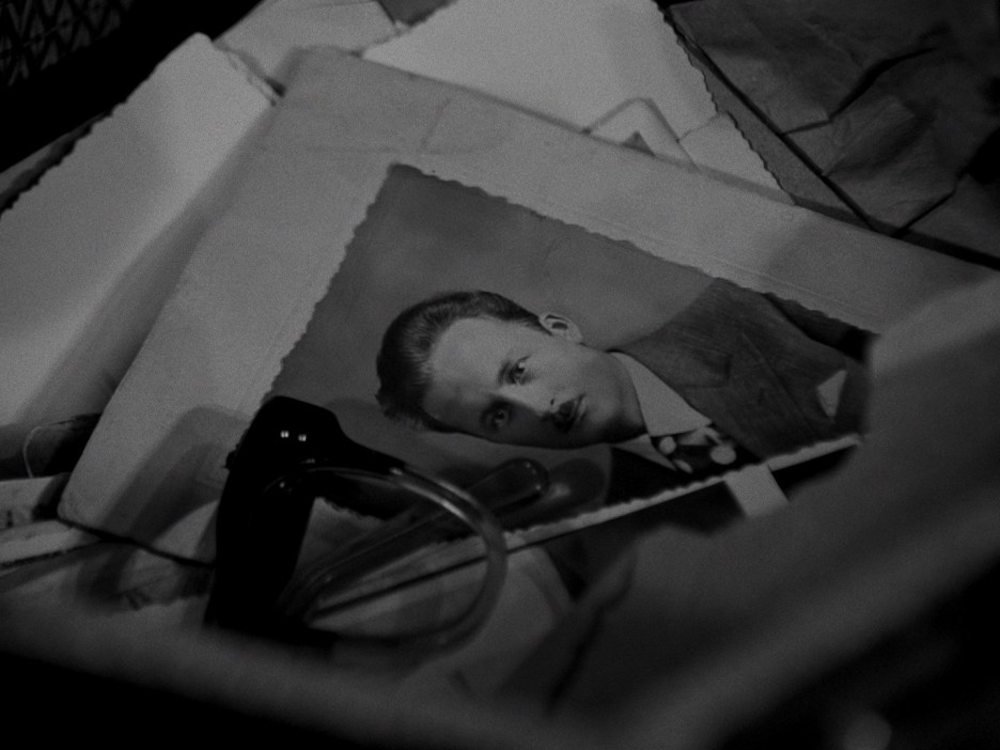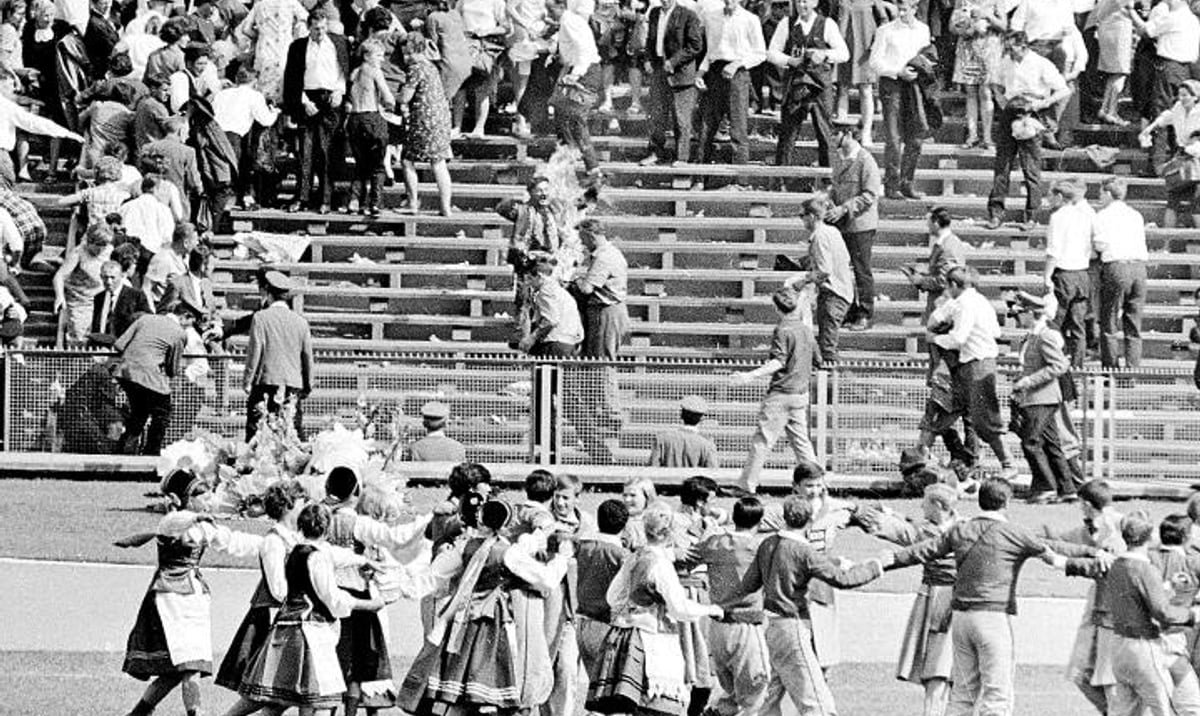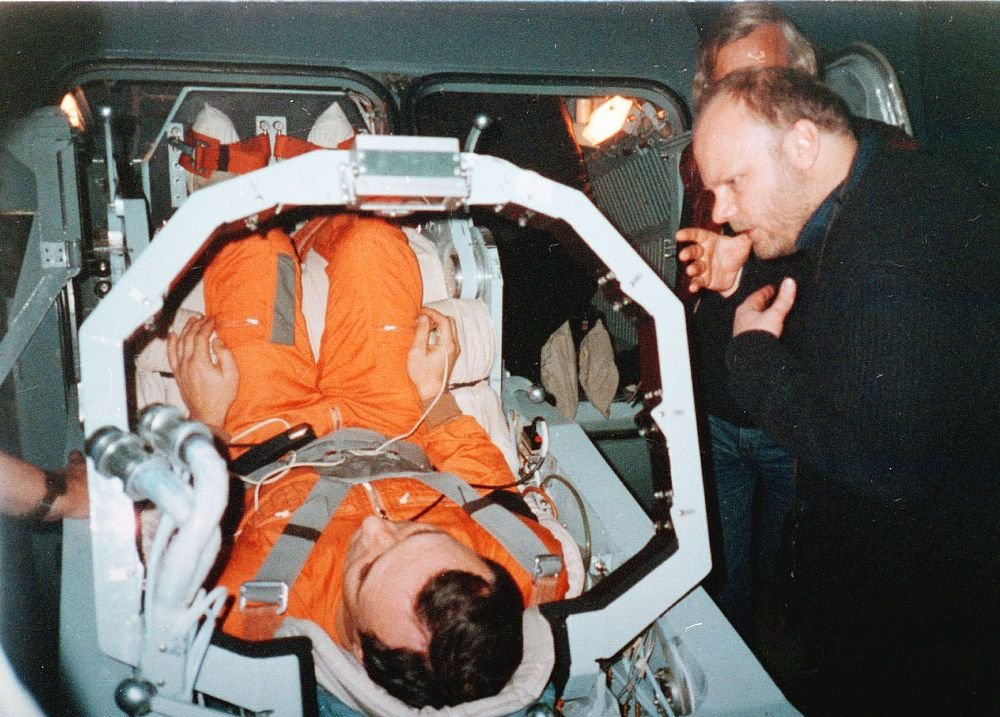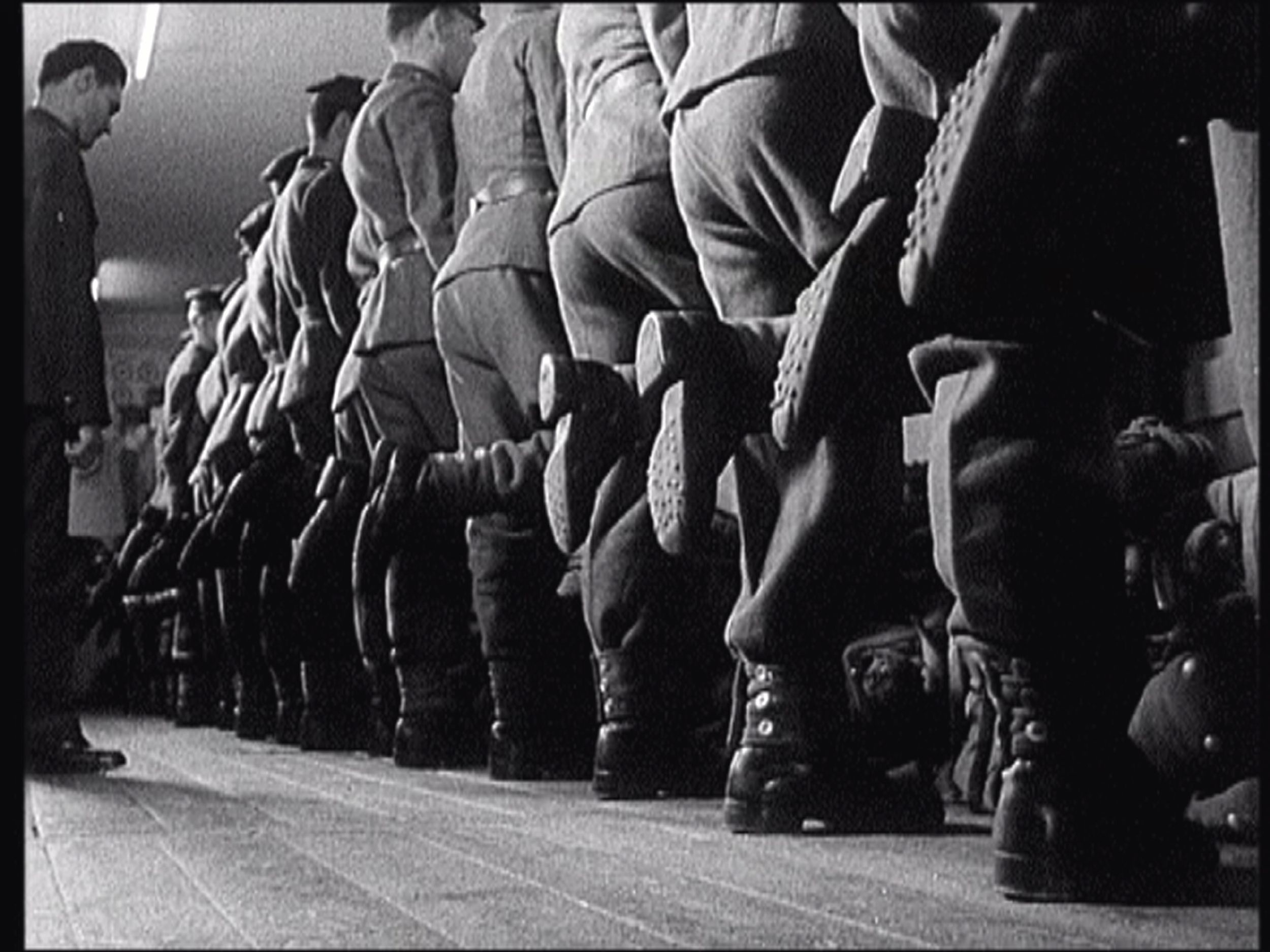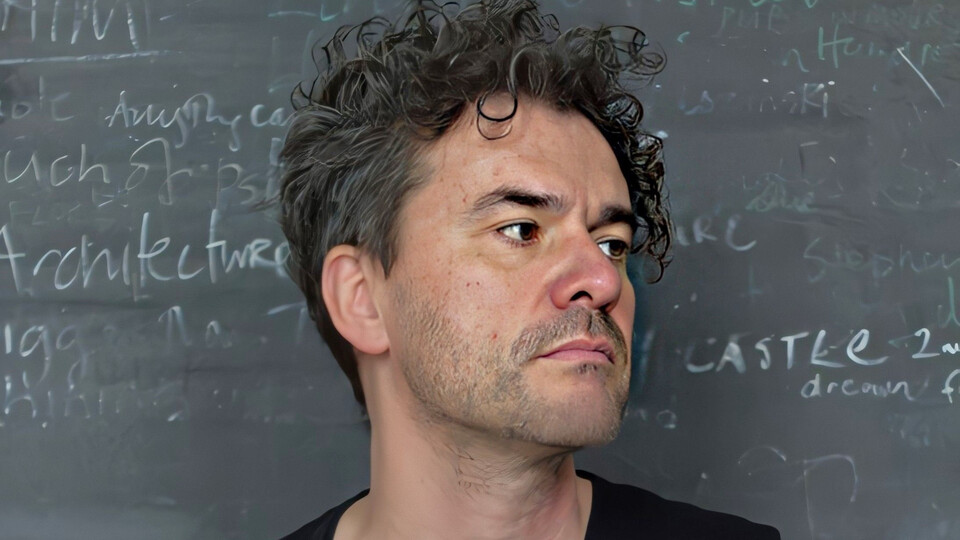Maciej Drygas: “I’m the chief Polish archivist.”
Polish documentary filmmaker Maciej Drygas came to Prague to present his 1991 film Hear My Cry, which displayed footage of Ryszard Siwiec’s 1968 act of self-immolation for the first time ever. Siwiec committed the act amidst enormous harvest festival celebrations at a stadium in Warsaw as a protest against the invasion of Czechoslovakia by Warsaw Pact troops earlier that year. However, Siwiec’s act was covered up by the previous regime, and all details of it, including the recorded footage, only became public after 1989. We spoke to Drygas not only about this film but also about working with archives, which he both uses and helps create.
You mentioned at the screening that people still come up to you nowadays after seeing the film and tell you their own stories of injustice. What do you think makes Ryszard Siwiec’s story so topical and universal?
When I was thinking about the structure of my film and its dramaturgy, the basic problem for me was to determine how much history and how much emotion should be in it. This question was further complicated by the fact that I was only just revealing the character of Ryszard Siwiec to the audience and I knew that they would perceive him exactly as I portrayed him.
I thus asked myself a number of routine questions. Should I start by saying that he studied philosophy in Lviv and that he was offered a teaching position during communism but that he refused to teach students false history? While I was considering this, I realised that the emotional web was far more important to me personally. It was something which was universal and which I consider essential in my film.
Can you give me an example?
If I had said directly that Siwiec left behind a wife and five children, that would be historical information. By contrast, introducing the family through Siwiec’s will develops the emotions much more. We hear what the protagonist bequeaths to each of his children, and from that we learn how many children he had, and this emotional web is formed. This allows people from all over the world to relate to the protagonist, even though they come from different cultures or countries.
When I started making Hear My Cry, which was my first documentary ever, I did everything with a child’s intuition and had no idea it would make it out into the world. It wasn’t until later, when the film started winning awards at festivals around the world, that I realised my concept had worked.
Despite the local nature of the story, it turned out to be very universal. Siwiec found his way into the consciousness of the audience and joined the world’s pantheon of heroes. I have always wanted most of all to make open-ended films, and I really don’t like to explicitly define how the audience should understand my work. My films reach people through various viewer sensibilities. Sometimes the result is rejection, while other times it can have an impact. Even yesterday, there was a long silence after the credits. That’s also why I kept them so long and without music – to give the audience a moment to think.
“Ryszard Siwiec actually thought about his act for many years.”
What do you think Ryszard Siwiec was like, based on how you got to know him through his legacy?
The figure of Ryszard Siwiec is very important to me, and I feel responsible for making sure that he is not forgotten. Even in relation to myself, I sometimes think about what he would say about my behaviour. And although I put a lot into making a documentary about him, I got even more out of it. For example, I had an affinity for his radicalism. I don’t mean that I want to repeat his act, but rather it’s about radicalism in thinking, in lifestyle, and in creation.
For Ryszard Siwiec, it wasn’t an emotional act that arose purely out of protest, as was the case with some young people such as Romas Kalanta or, to a certain extent, Jan Palach. Ryszard Siwiec actually thought about his act for many years. There was no doubt in his mind that at some point the communist system simply had to collapse. At the same time – as all his friends confirmed – he did not want to establish any kind of opposition structure. He didn’t want to endanger anyone, and he did everything entirely on his own. Even the Polish secret police were caught off guard by the form of his death. First they tried to ascertain if there was any kind of larger structure behind him, and then they spread the rumour that Siwiec had been a schizophrenic and an alcoholic. But I managed to get in contact with Siwiec’s doctor, who denied that he’d had any mental problems and said that his sacrifice had absolutely been a conscious decision.
|
Ryszard Siwiec (1909–1968) held a master’s degree in philosophy and was a teacher, but he worked mainly as a clerk. He lived in Przemyśl with his wife and five children. He was a member of the Polish resistance movement Armia Krajowa during World War II, and he was long frustrated by the postwar situation. On 8 September 1968 he burnt himself to death in front of tens of thousands of spectators during a national harvest festival at Warsaw’s 10th-Anniversary Stadium. He thus became the first person in the Eastern Bloc to commit such an act of protest. Two days before his self-immolation, Siwiec recorded a message on a tape recorder, in which he spoke the words “Hear my cry”, which Maciej Drygas chose as the title of his film. Only some of those present in the stadium noticed Siwiec’s act of protest, so the Polish secret police managed to conceal the event from the public. |
For me, the film works as a kind of spiral, in which first we learn the reasons that led Ryszard Siwiec to commit his act and see the reactions of those close to him. Only at the end of the film do we come to the act itself. How did you think about this? It must have been very emotional for his family. But at the same time, Siwiec burned himself to death precisely so that his act would be seen.
A seven-second-long, wide-angle shot from archival footage provided me with the dramaturgical key. At the bottom we see children dancing and above them people fleeing to the sides, while in the very centre of it all is the small figure of Ryszard Siwiec. These one hundred and sixty-nine frames are all that survived, and they, to some extent, dictated the shape of the documentary. In order to create the spiral that you mentioned around them, in the end I stretched the footage to six minutes, which of course was technically very difficult in the 1990s.
How did you manage it?
First we photographed every tenth frame so that we could even get a feel for the movements of the individual people. My cameraman and I spread out the photos and worked up a directorial storyboard. When we then projected it onto the big screen, we proceeded a bit like animation filmmakers. We had a camera with a microlens so that we could refilm parts of the shots in close-ups. We also altered the speed so that the image would still be perceptible to the audience. The whole process of turning this into the resulting six minutes took us months. It was only after we saw it on the big screen that we noticed the really small details – for example, that someone was carrying their shoes in their hand or that another person’s umbrella had been turned inside out.
The final shots of the film consist of a gradual zooming in on Ryszard Siwiec himself. When I first saw his face in close-up on the big screen, I realised that he was already on the other side during his act – there is no pain or suffering in his face. Seeing that Siwiec was actually liberated by his act was a very powerful experience for me. So I inserted the archival material into the film in such a way that it gradually brings the viewer closer to the protagonist. At the same time, I stretched the footage essentially endlessly to keep the audience in suspense the entire time.
“I inserted the archival material into the film in such a way that it gradually brings the viewer closer to the protagonist.”
Did you work with any other archival materials?
Yes, I worked with a feature film about Poland from 1968. Among other things, it contains shots of the stadium that were filmed with a panoramic camera, which appear squeezed on an ordinary screen but have a wide-screen format in the cinema. The faces of the girls we see in Hear My Cry thus look like they are from gothic paintings, and I felt that they gave my film a unique atmosphere.
|
Hear My Cry (1991) is one of the most important documentaries in the history of Polish cinema. A story of oppression, oblivion, moral duty, and collective repression, the film was part of the trend of Polish documentaries in the 1990s dealing with topics that had long been silenced. Ryszard Siwiec’s self-immolation was a tragic protest against the invasion of Czechoslovakia by Warsaw Pact troops. Siwiec burned himself to death in front of many thousands of people during a harvest festival at a stadium in Warsaw on 8 September 1968, succumbing to severe burns a few days later. However, the communist authorities managed to cover up his act. Based on surviving documents and the testimonies of close relatives and eyewitnesses, the filmmaker attempts to answer the questions of what motivated Siwiec to this act and what kind of man he was. (Source: National Film Archive) |
The music you used comprises another important part of the emotional web.
And there’s a story to go with it! When I was living in Łódź in the mid-1980s and moving around to different rented flats, I always painted them white so they would be nice, new, and fresh. I enjoyed this process a lot – the results of the work were always very visible. During this process, the only thing I had in the new flat was a radio. One day, when I was painting, they were broadcasting the iconic festival Warsaw Autumn. Right when I switched on the radio, they were playing a piece that affected me incredibly deeply. It was Paweł Szymański’s third score, and since I had nowhere to jot down his name, I grabbed a brush and painted it on that white wall. His music was always playing in my head, and when I started making my film five years later, I knew I would definitely use it.
Then I had to track down the composer. I didn’t have a phone of my own, and so I had to call him from a phone booth. He didn’t pick up. When I finally got hold of his address, I wrote him a letter, and only then did we manage to meet. At first Szymański wasn’t sure if he wanted to connect his complex music so concretely with Siwiec’s story, because the music itself is abstract. As soon as you combine it with an image, it suddenly takes on very clear meanings. When he gave me permission, he simply said that he was doing it for Ryszard Siwiec. In the end, we developed a very strong creative friendship. Szymański later composed the music for my radio plays, and I wrote the libretto for his opera. Nowadays he is a really important Polish composer, right up there with names like Penderecki and Lutosławski. Our creative collaboration was even the subject of some theses – and all of that was thanks to the fact that I painted his name on my wall that day.
You work with archival materials and the past in your other films as well. In one film, people read out letters seized by censors. Another film depicts a typical day in the Polish People’s Republic. Why did you go in this direction at the beginning of your documentary career?
My incurable disease is a love for archival materials, and my story with them began in the ’80s. Back then I still thought I was going to make feature films. Specifically, I wanted to make a film about Tsar Alexander II, who died together with his Polish assassin, Ignacy Hryniewiecki, from the revolutionary organisation Narodnaya Volya (The People’s Will). So, I set off for the archives of the Tsar’s Okhrana to search for historical materials for the first time. There I came across some information stating that, for the purpose of ascertaining the murderer’s identity, his head had been exhibited to students from the Technological Institute in St. Petersburg for a period of one day. Apparently it was preserved in alcohol, and it travelled around Russia in this fashion. I found this to be extremely interesting material, and I used it as the basis for probably the best screenplay I’ve ever written, entitled Surowy klimat (Harsh climate), but unfortunately, due to censorship, it was never realised. Its protagonist is an investigator who travels around Russia with the head of an assassin, trying to discover his identity. I reconstructed the whole story very carefully, but I still encountered historical gaps. This is where there was room for my artistic creativity.
While writing this screenplay, I came to understand the beauty of archival materials – the combination of reality and fiction. It was also my first experience ever working with such materials in filmmaking. In the case of my documentary work, my first experience was those seven seconds of Ryszard Siwiec burning. I also had many similarly interesting experiences later on.
Like when making your second documentary film, State of Weightlessness, about the Soviet space programme?
Yes. State of Weightlessness tells us about the price people pay for their eternal dream – transcendence. It is set during the time of the collapse of the Soviet Union, when cosmonaut Sergei Krikalev set out on a year-long mission, launching from the USSR and returning to the newly established Russia. But the film is not about him – the world of the cosmonauts is merely the lens through which we observe what is happening in the broader context. I tried to gain access to the top secret space archives, and in the end I spent several weeks listening to the entire 650 hours of Earth-to-space recordings from that very trip undertaken by Sergei Krikalev. The centre that manages spaceflights makes about 10 to 12 recordings per day – every time a particular space station flies over Russia, it connects with it. My documentary captures that time period’s drama, which permeates the Earth-to-space recordings. In them, a world is slowly disappearing, and what is happening on Earth gradually begins to affect what is happening on the space station itself.
I have a kind of system when I’m making a film – on the last page of my notebook, I always jot down different rumours and titbits that someone said to someone about something or someone and so on. Then, at the end of the documentation process, I set about checking their veracity. This was the case with one rumour about how there were some recordings stored in the basement of the institute of space medicine in Moscow. I went and asked the director of the institute about it, and he said that there weren’t any recordings. When I asked specifically about the basement, he said that he had no idea what was in it because the person who had the key to it had died. I then suggested that we open the basement door and find out what was hidden there. When we got inside, we found hundreds of boxes of film reels.
Since there was no projector on site with which to project the footage, we agreed that we would haul everything by truck to an editing room, which I subsequently rented, and together we would see what was on the more than 100,000 metres of film stock. I also rented us three editing tables so that we could go through all of the materials as quickly as possible. Among other things, I discovered some unique footage of experiments on animals and humans. As a result, my film contains a shot of a monkey stretched out like Christ on a merry-go-round – he’s looking at us with utter horror. I don’t have any contact with Russia now due to the war, but before it started, I learned that these shots from the basement had managed to become classics and had appeared in a number of films. So, the archive I discovered is still functioning to this day and in many places.
So, do you enjoy discovering archival materials and bringing them to the surface?
Whether I’m working with amateur or professional found footage, it’s absolutely fascinating to me how we can give new meaning to existing materials and transform them. It’s almost like we’re composing a feature film out of documentary footage.
This is well illustrated by my film One Day in People’s Poland, in which I documented one specific day – Thursday, 27 September 1962 – a day when nothing noteworthy happened. I devoted several years of my life to searching archives across Poland to find out what people and the party were doing on that particular day. At first I was delighted with every record I found; only later did I realise that there were really a lot of them and that I would have to pick and choose. I also found some absurd material that is hard to believe today and seems more like fiction. For example, at 1:30 p.m. the contents of the medical journal Żyjmy dłużej (Let’s live longer) were discussed in great detail by the Central Committee. First of all, it was said that too much was devoted to American medicine and not enough to Soviet medicine. The main dispute centred around the last page, which offered various pieces of advice on sexuality. At that time, this was the only Polish magazine that wrote about anything like this. A particularly heated discussion developed regarding the length of a man’s penis during erection, and the parties argued, for example, about whether it was even possible to measure such a thing and tried to prove the incompetence of the magazine’s editors.
Based on the various incredible documents, I understood that I was facing the challenge of playing with the truth. There is nothing contrived in the film, although some scenes may seem so. In addition to written documents, it was of course necessary to gather visual materials. It was clear to me that I couldn’t focus only on 27 September because I wouldn’t be able to find that much footage. Instead, I tried to capture the general atmosphere of the 1960s. I searched state archives, TV archives, and even private amateur archives. For a time, I travelled around Poland carrying a 16mm projector in one hand and an 8mm one in the other so that I could view absolutely all of the amateur footage.
Another challenge was deciding how to narrate the accompanying texts. I didn’t want professional actors, who I thought would disrupt the very specific atmosphere, and so I instead opted for ordinary people. It then took me several months to find the appropriate voices. I looked for these people in various ways, for example in villages, in hospitals, or among former police officers. I always recorded at least sixteen different voices before I found one that would really fit my documentary. While I was editing the film, I also realised that I needed to harmonise everything with the sound effects in a way that would make it all fit the period and feel as ambient as possible. For this reason, I have a whole collection of background noises from Poland. With this special sound engineering, I tried to make it so that the viewer was really drawn into the film.
What did this sound engineering process look like?
As this project was a coproduction with France, I had the opportunity to work with a group of fantastic French sound engineers who had collaborated with, for example, Kusturica and Lelouch. One of these sound engineers was a huge guy – 130 kilos – but he specialised in children’s and women’s steps. He would watch the screen and synchronise the steps accordingly. Later on, I learned post-synchronisation from him, and in my next films I used only my own steps.
For example, the film Violated Letters?
I always take a very broad view of the time period with many layers, both emotionally and in terms of narrative. Then when I work with post-synchronised sound, I go into minute detail. For example, when I’m recreating the footsteps of one of the characters, that’s when I focus on the rhythm of that individual and notice details that I hadn’t noticed before – like how this woman tripped over a rock. Suddenly, the approach to archival material becomes even more intimate – one could almost speak of a personal, metaphysical experience.
“I not only use archives but also create them.”
You continue to work with archives even now. Can you explain how?
I’m not merely a consumer and user of archival materials; I also create them. I work on two large archives. The first is the Archive of the Film School in Łódź, which contains more than six hundred documentary films made since 1949. Right now we are also starting with live-action student short films. As we have started digitising them, we decided to set up a website to make everything available online as well. We have agreed with film scholars on a way to describe and label each sequence, which includes using keywords. So, for example, you can search for specific films with a keyword like “train”. And you also don’t have to watch the whole film – the keyword will show you the specific shot where the train can be seen. The site also features editing tables, so you can easily transfer individual shots to your computer.
The second archive, which I’ve been working on for five years now, is the Polish Archive of Home Films at the Museum of Modern Art in Warsaw. There we store film strips, which I have come to realise are very often thrown out nowadays. Therefore, through the media I have appealed to all the people of Poland and asked them to send us materials of this type. We digitise them completely free of charge. People are very often moved by what is found on their films – they send us something from their grandfather, for example, and then call us up curiously. At the moment we have 50 family archives with around 75 hours of recordings. We’ve also created an online map showing the locations where each of the recordings came from. So, if someone is interested in materials from Krakow, for example, they can simply click on it on the map.
Family archives are very often isolated in the world, and I have connected them in a network. So I’m kind of a world repository of home movies. This is all taking place at the Museum of Modern Art in Warsaw. So, in a place where usually only art is found, this family footage has to some small extent become art as well and has therefore become sacralised.
Thus, I not only use archives but also create them. Although some of my films remain alive after all these years, it is actually my work with the archives that is by far the most important – I am leaving behind a memory that will last for many decades to come. Sometimes I joke that I’m kind of the chief Polish archivist. I was even recently approached by the Polish National Archives with a question about how to archive. In order to share my knowledge, I gave a very serious masterclass.
“In a place where usually only art is found, family footage has become sacralised.”
And are you planning any new films after all?
I am! My latest film is called Pociągi (Trains), and it is based on materials from a total of 95 archives that I have worked with before. I watch the story of the twentieth century from the window of a train, and it consists of an hour and a half of archival materials with no spoken word or added sounds.
When will it premiere?
I’m still working on the film, and we’re currently in the sound engineering phase. We are also purchasing the licensing rights for the archival materials. It is a rather expensive film, and it is being co-produced with the Lithuanians. The plan is that Pociągi should be finished this year and that the premiere should be next year. It will be a very experimental film that will be challenging for the audience, and I already perceive it as very important.
---
|
Maciej Drygas (1956) is a renowned Polish film and radio director, screenwriter, and teacher at the Polish National Film School in his hometown of Łódź. After studying film directing at the Gerasimov Institute of Cinematography in Moscow (VGIK), he worked as an assistant director for Krzysztof Zanussi and Krzysztof Kieslowski. He has won awards at many international festivals, and his films and radio documentaries have been broadcast by TV and radio stations all over the world. (Source: Institute of Documentary Film) |
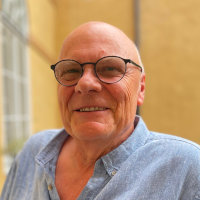 |

